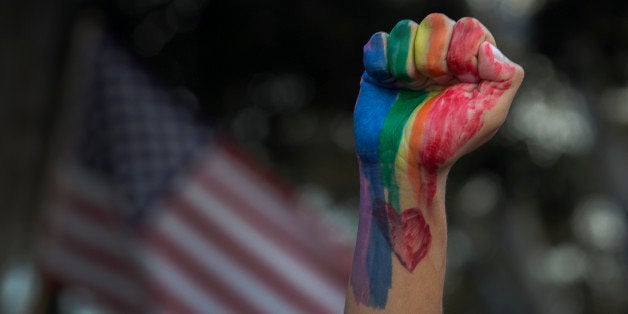
This month, I had the privilege to help organize and attend The White House Summit to Support African American LGBTQ Youth. The summit was the first of its kind to bring visibility to students at the intersection of black, queer and transgender identities. Having the federal administration affirm this youth demographic holds the promise that our nation might be better poised to ensure educational equity for all students. It was a highlight of my career as an educator to help organize a summit that would have been unthinkable to my 16-year-old self; terrified of anyone knowing I was queer to the point of an attempt to end my own life rather than live with my truth.
The relative invisibility and marginalization of issues impacting LGBTQ youth of color is shameful when you consider negative educational indicators such as truancy, dropout rates and the disproportionate representation of LGBTQ youth of color in the school-to-prison pipeline. It was exciting to attend an education conference that provided an LGBTQ youth development space for queer youth of color, where outcomes for LGBTQ students were discussed and topics and issues of marginalization were at the forefront of our sessions.
And true to one of the ways this community of people celebrate, there was dancing at The White House. There were Beyoncé songs, twirls and "yaasssss" by some amazing student leaders who embraced the moment of belonging -- all while just feet from the Oval Office. For me, it was an emotional high to bear witness to the reality that black LGBTQ lives mattered. So when I awakened some hours after this summit to the news of one of the deadliest shootings in modern U.S. history -- a pointed attack on the LGBTQ community, particularly Latinx and black people, that claimed 49 lives -- my spirit was shaken to its core. Safe classrooms mean very little in an unsafe world.
That night at Pulse, LGBTQ people of color were dancing and celebrating PRIDE month in one of the few spaces assumed to be safe in a world where same sex affection, or presenting contrary to gender at birth, can incite violence or death. Gay night clubs for so many of us represent first dances, first loves, first friendship circles and people who knew exactly who you were and celebrated and held a mirror to that self-acceptance.
Though many schools in 2016 have gay straight alliances, few predominantly black and Latinx schools do, and few are truly safe for LGBTQ people of color. As a result, once of age, clubs like Pulse in Orlando become our safe spaces. The chilling reality was, the faces of the victims of the Orlando shooting looked much like the faces of the LGBTQ youth dancing at the White House during the summit.
I've long advocated for this notion of #BraveEducation as a push, beyond just safety, to encourage learning environments where notions of diversity and inclusiveness for ALL students is viewed as central to achievement outcomes. Just days after being in the White House, I drove to Orlando, encouraged by the determination and commitment of Lauren Chianese, Executive Director of Teach For America-Orlando, to be a resource to teachers as they work to cultivate safe and brave classrooms in Orlando. On the six-hour drive, I finally had time to sit with the sadness and anger the Orlando shooting brought up for me. Yet, upon arrival to Orlando's city's limits, I was immediately inspired as I saw firsthand Orlando's response and commitment to cultivating a safe and affirming city for all. Rainbow colored #OrlandoStrong billboards colored the city, and there seemed to be a feeling in the air of a city re-defined by its compassion and solidarity.
I spoke with teachers passionately about the dangers of tokenizing the tragedy -- of not seeing a connection between this brutal and senseless killing of LGBTQ people in mass and the disproportionate violence and death LGBTQ people of color face daily. I spoke about the relationship between "casual homophobia" that we hear in our schools that goes unchallenged and unchecked, and the shooting. Our advocacy for educational equity must ensure all students feel safe to learn in their classrooms, whatever their race, gender identity, sexual orientation, religion or ability.
We have an opportunity to create the kinds of environments where the call for safe classrooms goes beyond progressive rhetoric and is measured by social-emotional outcomes and academic achievement. Educators play a huge role in creating and fostering these safe and inclusive environments for all students. In the wake of the Orlando tragedy, many organizations shared helpful resources for educators navigating the tragedy, including these from GLSEN and the NYC Department of Education.
Despite the work that still must be done, I was encouraged in the short time I had with Teach For America-Orlando and the local community. I feel confident that there are individuals, both LGBTQ and allies, who are committed to ensuring that one day ALL children will have an opportunity to attain an excellent education. As we work together to create a safer world for our children, we must understand that we plant the seeds for this by creating safe classrooms and schools. I hope for a world where students value and honor human life, regardless of differences. What better a place to advance a safer world than starting with the children and youth we teach?